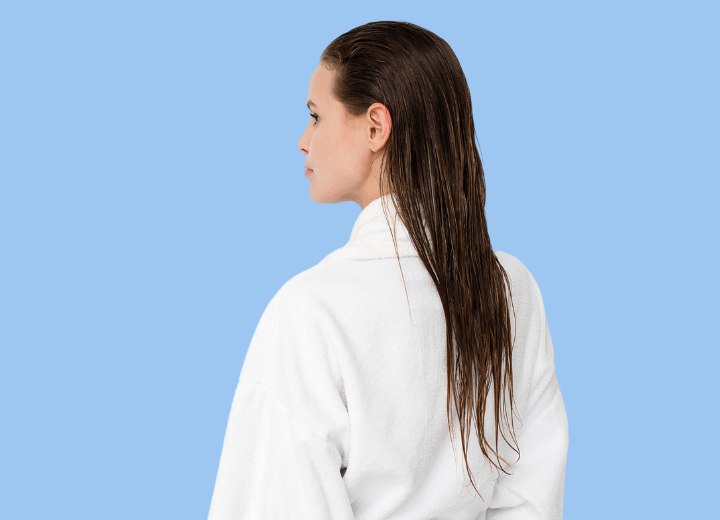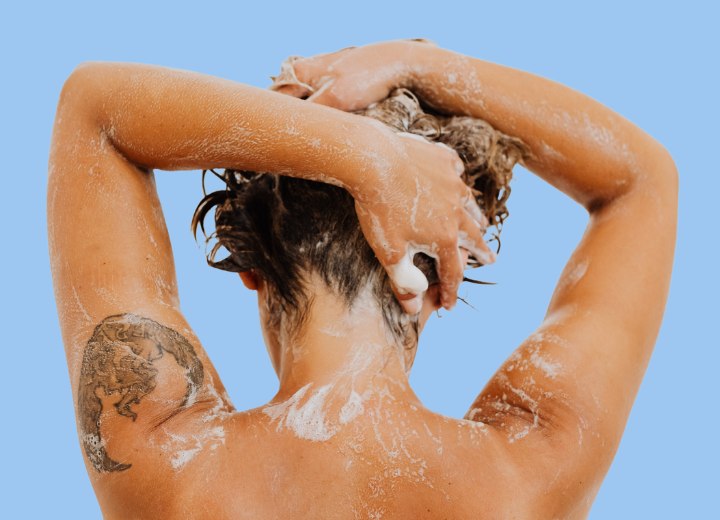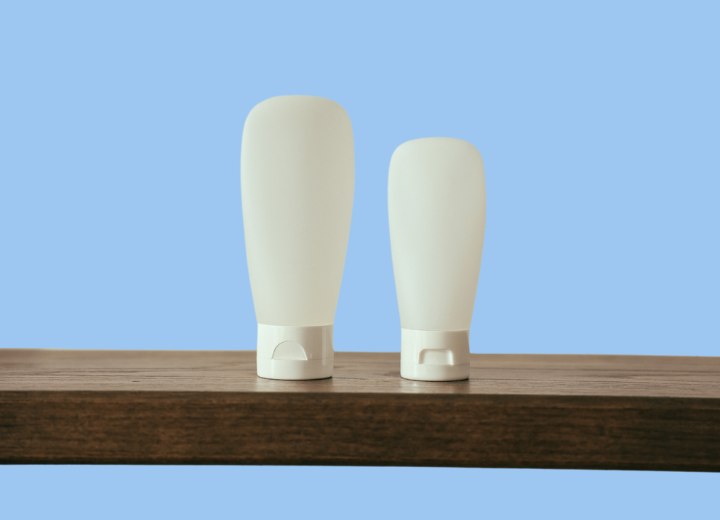Basic Hair Care (2)

There is also the fact that many people just never learned the right way to perform these basic hair care procedures. I know that I can't remember ever being "taught" how to shampoo and condition my hair. We go from being infants and small children who are bathed by our parents, to older children who are expected to perform these tasks for ourselves. Typically, there's never much (if any) actual teaching of the right way to do these things.
So, let's get back to the basics and discuss the proper ways to shampoo, condition and dry hair:
The first step to healthy hair is cleansing. This means choosing the right shampoo and using the correct amount of shampoo. Most shampoo formulas are made for "normal to dry hair" or "normal to oily hair". A good way to determine which of these you need is to take a spray bottle with water and lightly mist your hair when it is dry.
Does the water absorb immediately, or does it bead up on the surface for a moment before being absorbed? If the water absorbs immediately, you should use a shampoo for "normal to dry hair" because it has more moisturizing ingredients. If the water beads up initially, use a shampoo for "normal to oily hair".
The spray test is usually performed to determine the hair's porosity, but it works here because porous hair (where the water absorbs immediately) tends to be dry, while resistant hair (where the water beads up) tends to accumulate more surface oils.
Once you've chosen your shampoo, you're ready to wash your hair. You need to completely saturate the hair with water. This is especially easy to do in the shower as you simply place your head under the spray. Run your fingers through your hair to make sure the water penetrates to the roots.

Next, you need to use the right amount of shampoo. Most package directions for shampoo call for a "quarter-sized" (2.5 cm circle) amount. These instructions are intended for hair of average length - somewhere between chin and shoulder length. If you have really short hair (shorter than chin length) you should use a little less (a nickel-sized [1.5cm circle] amount). If you have longer hair (length that is past the shoulders) use more (a half-dollar-sized [4cm circle] amount).
Rub the shampoo between your palms and apply it to the scalp. Massage the scalp and shampoo until the shampoo forms lather, running your fingers through your hair to distribute the lather evenly then rinse your hair completely (until the water runs clear).
Repeat the shampoo process, and note that the second time around the lather should be much thicker and foamier. This means that the dirt and oils that were initially on the hair have been removed (or dramatically reduced) and that the hair is clean. After a few times of shampooing your hair you'll recognize whether the lather is sufficiently thick to know if you need a second shampooing or not. If you get a full, rich lather on the first try, you don't need to shampoo again.

Step two to having healthy hair is conditioning, and again, using the right conditioner and the proper amount is important. If your hair is porous, try using a conditioner high in moisturizers. If it is resistant, you would probably want to go with a lighter formula.
Before applying the conditioner to your freshly shampooed hair, you'll want to squeeze out the excess water from your hair, especially if it is long. The best way to do this is simply run your hands over your head and down your neck, pressing gently to force the excess water out of the hair. For very long hair, you can use the above method at the scalp and neck, then gather the hair into one hand and squeeze the remaining length between two fingers and slide them down to the ends of the hair.
Once again, follow the directions on the conditioner package to determine how much you need. Use less if your hair is short, and more if it is very long. Apply the conditioner to the palms of your hands and rub your hands together to spread it then apply the conditioner to your hair using a stroking motion. There is no need to apply the conditioner directly to the scalp; just to the hair, since working the conditioner through the hair tends to spread it onto the scalp as well.
Continue reading ...